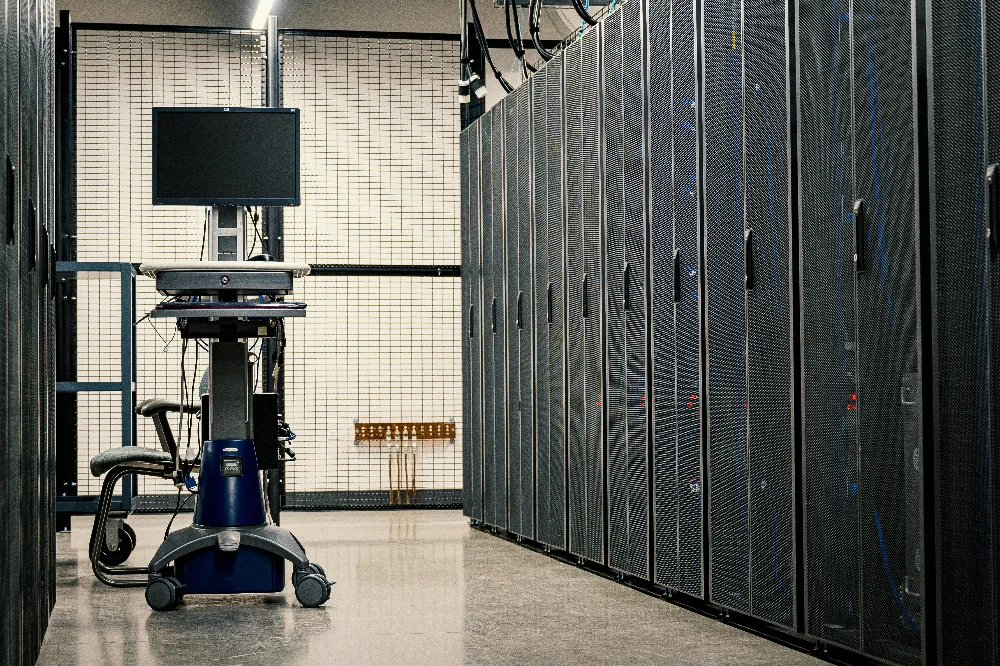Troubleshooting Tips for Network Devices: A Simple Guide
Raven Technology Solutions | 01/28/2025
ShareNetwork devices are the backbone of modern connectivity, keeping our homes and businesses running smoothly. But when network issues arise, they can be frustrating and disruptive.

Before calling in a technician, there are several basic troubleshooting steps you can take to resolve common issues with your router, modem, or other network devices.
This guide covers straightforward tips to help you identify and fix network problems, saving time and getting you back online quickly.
1. Check if Airplane Mode Is Enabled
It might sound simple, but one of the most common reasons devices fail to connect to a network is that they’re in airplane mode. This setting disables all wireless communication, including Wi-Fi.
What to Do for Devices That Have Airplane Mode:
- On your device, navigate to the settings menu and check if airplane mode is turned on. If it is, toggle it off and wait a few moments for the device to reconnect to Wi-Fi.
2. Ensure Wi-Fi Is Turned On
Another common issue is that Wi-Fi is simply turned off. This can happen accidentally or as a result of certain device settings.
What to Do to Check Your Wifi:
- On a laptop, look for the Wi-Fi icon in the system tray or taskbar. If it’s disabled, click to turn it back on.
- On mobile devices, go to the Wi-Fi settings and ensure it’s enabled.
- For desktop computers using external Wi-Fi adapters, check that the adapter is plugged in securely and functioning correctly.
3. Check for Device Connectivity Issues
Sometimes, the problem isn’t with your device but with the router or modem. If one device can’t connect, test the network on other devices.
What to Do to Look for Connection Issues:
- Try connecting another device, like a phone or tablet, to the same Wi-Fi network.
- If other devices can connect, the issue is likely with the specific device. Restart it and check the network settings.
- If no devices can connect, focus your troubleshooting on the router or modem.
4. Restart Your Devices
Restarting is one of the most effective ways to resolve technical issues. Network devices and computers can experience temporary glitches that a simple reboot often fixes.
What to Do for a Device Restart:
- Restart the affected device.
- Unplug your router and modem, wait 30 seconds, and then plug them back in. Allow a few minutes for the devices to fully reboot and reconnect.
5. Check for Overloaded Networks
If multiple devices are connected to the same Wi-Fi network, it may be overloaded, causing slow speeds or connection issues.
What to Do to Check for Overloading:
- Log in to your router’s admin panel (usually via a web browser at an address like 192.168.1.1) to see a list of connected devices.
- Disconnect any unnecessary devices from the network to free up bandwidth.
- If needed, upgrade your internet plan or invest in a router with better capacity for multiple connections.
6. Verify Network Cables and Connections
Physical issues with cables and connections are another common cause of network problems.
What to Do to Verify Connections and Cables:
- Ensure all cables are securely connected to the modem, router, and any wired devices.
- Look for damaged or frayed cables, and replace them if necessary.
- If you’re using a wired Ethernet connection, test with a different cable to rule out a faulty one.
7. Check for Router or Modem Updates
Outdated firmware on your router or modem can cause compatibility issues or network instability.
How to Check Your Router or Modem:
- Access your router’s admin panel and look for a firmware update section. Follow the manufacturer’s instructions to update to the latest version.
- If your modem was provided by your ISP, contact them to ensure it’s running the most recent firmware.
8. Look for Signal Interference
Wi-Fi signals can be disrupted by physical obstacles or electronic interference from nearby devices.
How to Find Signal Interference:
- Move your router to a central location in your home or office, away from walls or metal objects.
- Avoid placing the router near devices like cordless phones, microwave ovens, or baby monitors, which can interfere with Wi-Fi signals.
- Consider using a Wi-Fi extender if the signal is weak in certain areas.
9. Reset to Factory Settings
If all else fails and the network device still isn’t functioning properly, resetting it to factory settings can resolve deeper issues.
How to Reset to Factory Settings:
- Use the reset button on your router or modem (usually a small pinhole that requires a paperclip to press). Hold it down for 10–30 seconds.
- Reconfigure your network settings as per the manufacturer’s instructions.
When to Call a Professional
If these troubleshooting steps don’t resolve your network issues, it may be time to consult an expert. Persistent problems could indicate faulty hardware, ISP issues, or advanced configuration needs. Professional assistance from Raven Technology Solutions can save time and ensure your network is set up for optimal performance.
Network issues can be frustrating, but with these basic troubleshooting tips, many problems can be resolved quickly and efficiently. By checking simple settings like airplane mode, verifying connections, and restarting devices, you can often restore connectivity without additional help.
Remember to keep your devices updated and monitor your network for overloads or interference to maintain a stable connection. With these steps, you can take control of your network and keep everything running smoothly.